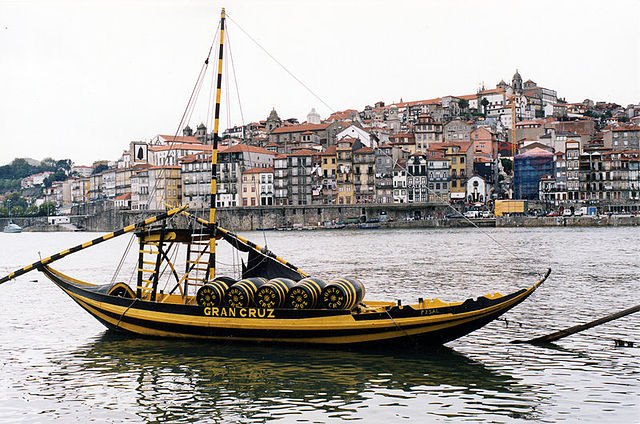Vinho Verde refers to Portuguese wine that originated in the historic Minho province in the far north of the country. The modern-day 'Vinho Verde' region, originally designated in 1908, includes the old Minho province plus adjacent areas to the south. In 1976, the old province was dissolved.
Vinho Verde traditional harvest using ladders to pick grapes from vines trellised on high pergolas ("vinha de enforcado"), Guimarães, Portugal (2007)
A rosé Vinho Verde.
Grapes on a vine in the Vinho Verde region
Portuguese wine was mostly introduced by the Romans and other ancient Mediterranean peoples who traded with local coastal populations, mainly in the South. In pre-Roman Gallaecia-Lusitania times, the native peoples only drank beer and were unfamiliar with wine production. Portugal started to export its wines to Rome during the Roman Empire. Modern exports developed with trade to England after the Methuen Treaty in 1703. From this commerce a wide variety of wines started to be grown in Portugal. In 1758, one of the first wine-producing regions of the world, the Região Demarcada do Douro was created under the orientation of Marquis of Pombal, in the Douro Valley. Portugal has two wine-producing regions protected by UNESCO as World Heritage: the Douro Valley Wine Region and Pico Island Wine Region. Portugal has a big variety of local kinds, producing a very wide variety of different wines with distinctive personality.

The traditional rabelo boat, used to transport Port Wine from the Douro Valley to the cellars near the city of Porto.
"cupa", Roman tombstones in the shape of wine barrels, were used in the 3rd century AD in Alentejo, Museu de Évora
Vineyards in Vinho Verde Demarcated Region in Minho, Portugal
A glass of tawny port







